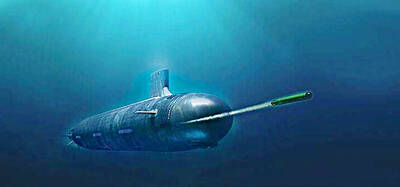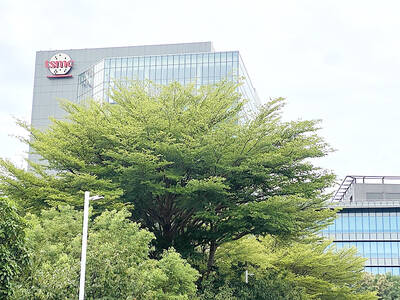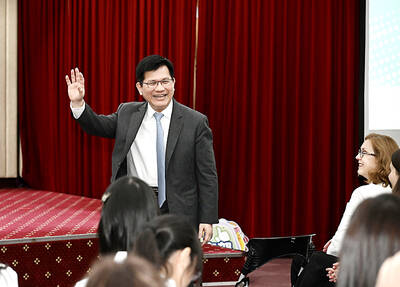The tiny kung-fu fighters are attacking again. Fortunately, my best mate's gran has seen them and is merrily swatting them away with her hands, her hairdo and a teaspoon. Five minutes ago, she had never played a computer game. Now she's just beaten my high score.
It takes a lot to shock a room full of games developers, but Richard Marks did just that in 1999 with his creation, EyeToy. When he stepped up to the stage at the Sony Europe developer conference, the main screen was filled with asterisks. He stood in front of a camera and calmly wiped them all away with his hand. The room fell silent.
"We all looked at each other and said `which one of us is going to develop this?'" remembers Mike Haigh, now EyeToy development director. The group that got the chance was Sony Camden, which later became part of Sony London Studios. Marks, an American who built cameras for underwater robots, moved to the UK and started working with Sony Camden on the technology.
The standard PlayStation 2 (PS2) controller has 15 buttons. The Xbox has 11. The EyeToy has none. It is a small camera that, once plugged into a PS2, displays on the screen an image of you surrounded by bright computer graphics. Buttons on the screen are pressed by waving your hands over them.
Everything works exactly how it would in the real world -- at least, how it would if you were as flat as the TV screen. Dirty windows can be wiped clean. Bubbles can be burst with your finger. A ball can be kept in the air with your head (or your elbow, or your tongue).
For perhaps the first time in the history of computing, things behave exactly as they should. There is no interface gap -- no character represents you, because there you are on the screen, waving your arms and moving things in front of you. No instruction manual.
Just plug in and start to play. And it makes a great party game.
"It involves a very natural interface -- body movement," said Gonzalo Frasca, a researcher in computer games at the IT University of Copenhagen. "So even people who have never played computer games feel they can give it a try. EyeToy did to my wife what seven years of marriage to a videogame researcher could not: get her into videogames."
The first EyeToy game, Play, came out in winter last year and was an instant success. Unusually for a computer game, it kept on selling -- more than 4 million at the last count.
The more people played it at others' houses, the more they wanted a copy of their own. And not all were in the usual games player demographic.
"When we trialed it at a games event, we had no idea we would get grandparents and mothers playing," says Ron Festajo, creative director of EyeToy.
"Normally, the parents would be sitting around talking, while the children played with the controllers. But when they saw their children washing windows with their hands, they were saying `let me show you how it's done, you haven't got a clue how to wash windows.' The parents were competing against their children.
"That's when we knew we had something special," he said.
A lot of the magic came from that launch game, which was like nothing people had played before -- and yet was simple enough for everyone to try.
"If we'd launched it as the obvious Webcam -- it's a camera, it sits on your PS2 and the killer app [application] is that you can see your friends and family across the world -- I don't think it would have been anywhere near as successful," says Haigh. "It's too obvious. It needed something that sparked the imagination."
To help develop the platform, Sony has made the device's development coding freely available. Chat is now available, as are plenty of third-party games. In the new year, Sony will release Kinetic -- an EyeToy personal exercise trainer developed with Nike. It uses a wider lens add-on to provide a full-body workout.
Sony London is also developing EyeToy for the forthcoming PlayStation Portable (PSP) handheld, while Marks is playing with depth-sensitive cameras which, depending on per-unit cost, may or may not emerge on the PlayStation 3.
Meanwhile, the success of EyeToy means that both Nintendo and Microsoft are reportedly developing their own versions for the next generation of consoles available next year. PC and Mac Webcam games are also now appearing. ToySight, for example, was developed in Newcastle, and uses Apple's iSight camera to play EyeToy-like minigames.
Camera play is becoming a platform of its own, but the technology behind these games is nothing remarkable -- they could probably have been created years ago. It needed someone to take the risk and prove it could be successful.

FIREPOWER: On top of the torpedoes, the military would procure Kestrel II anti-tank weapons systems to replace aging license-produced M72 LAW launchers Taiwan is to receive US-made Mark 48 torpedoes and training simulators over the next three years, following delays that hampered the navy’s operational readiness, the Ministry of National Defense’s latest budget proposal showed. The navy next year would acquire four training simulator systems for the torpedoes and take receipt of 14 torpedoes in 2027 and 10 torpedoes in 2028, the ministry said in its budget for the next fiscal year. The torpedoes would almost certainly be utilized in the navy’s two upgraded Chien Lung-class submarines and the indigenously developed Hai Kun, should the attack sub successfully reach operational status. US President Donald Trump

Taiwan Semiconductor Manufacturing Co (TSMC, 台積電) is expected to start construction of its 1.4-nanometer chip manufacturing facilities at the Central Taiwan Science Park (CTSP, 中部科學園區) as early as October, the Chinese-language Liberty Times (the Taipei Times’ sister newspaper) reported yesterday, citing the park administration. TSMC acquired land for the second phase of the park’s expansion in Taichung in June. Large cement, construction and facility engineering companies in central Taiwan have reportedly been receiving bids for TSMC-related projects, the report said. Supply-chain firms estimated that the business opportunities for engineering, equipment and materials supply, and back-end packaging and testing could reach as high as

ALL QUIET: The Philippine foreign secretary told senators she would not respond to questions about whether Lin Chia-lung was in the country The Ministry of Foreign Affairs on Wednesday confirmed that a business delegation is visiting the Philippines, but declined to say whether Minister of Foreign Affairs Lin Chia-lung (林佳龍) is part of the group, as Philippine lawmakers raised questions over Lin’s reported visit. The group is being led by Deputy Minister of Agriculture Huang Chao-chin (黃昭欽), Chinese International Economic Cooperation Association (CIECA) chairman Joseph Lyu (呂桔誠) and US-Taiwan Business Council (USTBC) vice president Lotta Danielsson, the ministry said in a statement. However, sources speaking on condition of anonymity said that Lin is leading the delegation of 70 people. Filinvest New Clark City Innovation Park

DEFENSIVE EDGE: The liaison officer would work with Taiwan on drones and military applications for other civilian-developed technologies, a source said A Pentagon unit tasked with facilitating the US military’s adoption of new technology is soon to deploy officials to dozens of friendly nations, including Taiwan, the Financial Times reported yesterday. The US Department of Defense’s Defense Innovation Unit (DIU) is to send a representative to collaborate with Taiwan on drones and military applications from the semiconductor industry by the end of the year, the British daily reported, citing three sources familiar with the matter. “Drones will certainly be a focus, but they will also be looking at connecting to the broader civilian and dual-use ecosystem, including the tech sector,” one source was